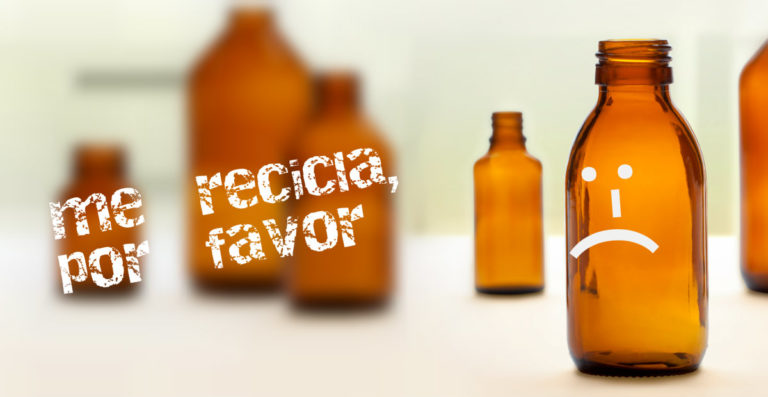Advertisements
Glass recycling is an essential practice for preserving the environment. Not only does it prevent tons of waste from ending up in landfills or, even worse, at the bottom of the ocean, it also allows the creation of new products from materials that would otherwise take centuries to decompose. Let’s explore how recycled glass undergoes an incredible transformation and the positive impact this practice has on our planet.

The Journey of Glass: From Collection to Transformation
When it comes to recycling glass, it’s important to understand that the process begins long before it is collected. It all depends on how the glass is disposed of. If disposed of correctly, it can be reused indefinitely. Otherwise, it will become a permanent environmental problem.
The first step in glass recycling involves collecting and separating the waste by color: green, amber (brown) and clear. This separation is crucial as it ensures the quality of the new products that will be manufactured. Mixed glass can compromise the purity and strength of the recycled materials.
After collection, the glass undergoes a rigorous cleaning process. This process includes removing labels, metal caps, and other unwanted substances that may have gotten into the glass. Water tanks and electromagnets are used to ensure that the glass is as pure as possible before moving on to the next stage.
The cleaned glass then passes through a conveyor belt or table where additional impurities such as stones, plastic and soil are removed. This is essential to prevent any non-recyclable material from ending up in the final process.
Crushing and Preparing Glass for Revival
Once all impurities have been removed, the glass is sent to a crusher, which turns it into homogeneous shards. These shards are the perfect raw material for creating new glass products.
It’s amazing to think that a simple glass bottle, if disposed of correctly, can be transformed into something completely new. In Israel, for example, there are mountains of broken glass ready to be recycled and reused, an image that reflects the enormous potential of this practice.
However, before it goes on to the final transformation, a further sorting is carried out. This ensures that absolutely nothing but pure glass is included in the melting process. Purity is essential for the quality of recycled glass.
The Merger Process: From Shards to New Products
Once the shards are properly prepared and free of impurities, the glass is finally sent to the glass industry. There, it is subjected to extremely high temperatures, between 1,000 and 1,200 degrees Celsius. This intense heat melts the shards and transforms them into new glass, ready to be molded into a variety of products.
What’s fascinating about glass recycling is that one kilo of broken glass generates one kilo of new glass. This means that all recycled material is used in its entirety, without any waste. Furthermore, glass can be recycled an infinite number of times without losing its quality or purity, which makes it one of the most sustainable materials available.
Amazing Products Made from Recycled Glass
But what exactly happens to recycled glass? The answer is surprising. In addition to being turned back into jars and bottles, recycled glass is also used in the fiberglass industry. This means that your old soda bottle could become part of a surfboard, a car body, helmets, and even airplanes.
Just imagine: that glass bottle that you disposed of correctly could now be used to build something as incredible as the body of a Porsche. And the best part is that this life cycle of glass can be repeated countless times, as long as the material is disposed of correctly.

The Challenges of Fiberglass Recycling
Despite all the advantages of glass recycling, there is one important point to consider: fiberglass recycling is still a challenge. Although fiberglass is largely made from recycled glass, it also contains other materials, such as polyester and resins, which can be toxic.
These additional components complicate the fiberglass recycling process, and there is still much to be learned about the proper way to dispose of it. Therefore, while glass in its pure form can be recycled indefinitely, fiberglass still requires further research and development into efficient recycling methods.
The Positive Impact of Glass Recycling on the Environment
Glass recycling is one of the most efficient and sustainable practices we can adopt. It not only conserves natural resources, such as sand and limestone, but also significantly reduces the amount of waste that ends up in landfills. Every kilo of recycled glass means one less kilo of waste in the environment.
Furthermore, glass recycling contributes to energy savings. Producing glass from recycled glass cullet requires less energy than making new glass from virgin raw materials. This translates into lower greenhouse gas emissions, helping to combat climate change.
If everyone does their part and correctly disposes of glass for recycling, we can significantly reduce the environmental impact caused by improper waste disposal. And, of course, contribute to a more sustainable and green future for future generations.
Do Your Part in Glass Recycling
Glass recycling is a simple process, but it requires everyone's collaboration. By correctly separating glass from other waste and sending it for recycling, you are contributing to preserving the environment and reducing the consumption of natural resources.
Remember: a glass bottle thrown into the trash can take thousands of years to decompose. But if recycled, it can be given a new life in a variety of products, from new bottles to surfboards and airplanes.
So next time you’re throwing away glass, think about the difference you can make. Recycle, and help transform old glass into new, over and over again.
Check out other interesting facts about recycling clicking here.
Learn how to make art by recycling, Click here.




Does recycling glass bottles to produce new bottles require other raw materials besides crushed glass shards, or are the shards alone sufficient? Thank you.
the higher the % of pure glass, the stronger the material will be
Is it possible to make a living from recycling glass? What are the options for selling glass? Is it expensive to invest in this?
José Carlos. In fact, every business is very similar, depending much more on good management, marketing and sales than on knowing whether there are good opportunities. Depending on your point of view, selling umbrellas in the desert is an excellent business. Just change the name to parasol.
Don't expect that there will be subsidies for entrepreneurs in Brazil because they would be helping the environment. That's not how it works, but you can research in your city or state to see if there are any benefits.
The advantage of recycling glass is obvious: there is an abundance of raw material available. But the disadvantage is the same: there is a lot of raw material to make glass. We have sand and limestone in abundance in this country.
You can find more information about recycling as a business in this article: http://setorreciclagem.com.br/reciclagem-de-vidro/iniciando-na-reciclagem-de-vidro/
And perhaps invest (very little) in a beginners course to identify the possibilities in this field: http://setorreciclagem.com.br/category/cursos/iniciantes/